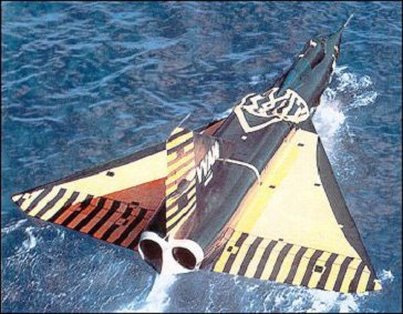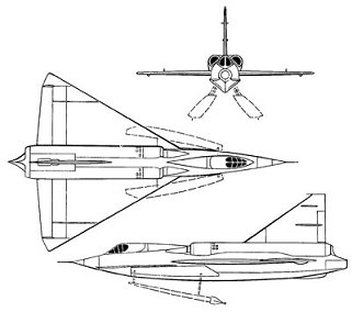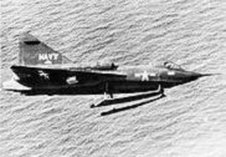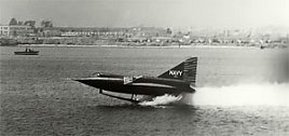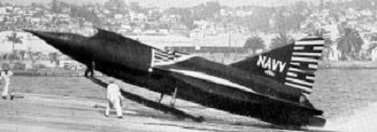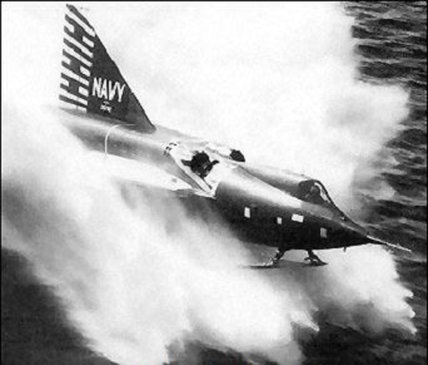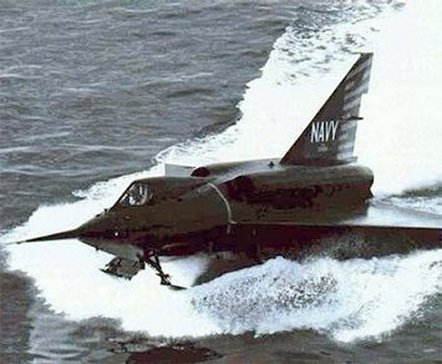The Convair Sea Dart (Jan 2010)
The last two Newsletters have featured seaplanes with unconventional alighting gear and we can’t move on without mention of the Convair Sea Dart.
The introduction of the jet engine raised concerns in the US Navy that its carriers would be unable safely to handle the much higher take-off and landing speeds of planned high-performance aircraft and in 1951 they looked for an alternative method of operating supersonic fighters. Convair’s proposal was successful in winning the contract.
The XF2Y-1’s watertight hull floated with the trailing edge of the wings touching the water and the leading edge 18” above the surface. The engine intakes were set above the fuselage to be clear of spray.
Two J-46 after-burning engines were planned, each producing 6,000 lbs thrust. However, they were not ready in time for the first flight on 9 April 1953 and two non-after-burning J-34s of 3,400 lbs thrust were fitted.
The introduction of the jet engine raised concerns in the US Navy that its carriers would be unable safely to handle the much higher take-off and landing speeds of planned high-performance aircraft and in 1951 they looked for an alternative method of operating supersonic fighters. Convair’s proposal was successful in winning the contract.
The XF2Y-1’s watertight hull floated with the trailing edge of the wings touching the water and the leading edge 18” above the surface. The engine intakes were set above the fuselage to be clear of spray.
Two J-46 after-burning engines were planned, each producing 6,000 lbs thrust. However, they were not ready in time for the first flight on 9 April 1953 and two non-after-burning J-34s of 3,400 lbs thrust were fitted.
Early in the take-off run, about 10 mph, the twin skis were extended to an intermediate position and at 50 mph they were fully lowered until the take-off speed of 145 mph was reached. The skis vibrated continuously during take-off, so much so that control was extremely difficult and a re-design of the skis and oleos dampers was necessary. The second Sea Dart was fitted with J-46 engines and also had an extended rear fuselage and nozzles. On 3 August 1954, Charles Richbourg needed just a shallow dive to make the Sea Dart the first, and only, seaplane to fly supersonically. Unfortunately, just three months later, a high-speed low-level flypast resulted in the break-up of the airframe and Richbourg was killed. All operations were suspended and, with the Navy losing interest in the project, it was cancelled.
Despite this, tests continued and a large single hydro-ski was fitted. Since high-speed flight was not planned, the ski was not retractable, merely moved to a position parallel to the fuselage. Once again, uncontrollable pitch oscillations required work on oleo damping and lateral controls. This proved so successful that it allowed the Sea Dart to operate in waves up to 10’ high and even to cope with crosswinds take-offs and landings with one wing tip dragging. The final open sea tests were flown on 16 January 1956 and the remaining Sea Darts were retired to museums and storage.
